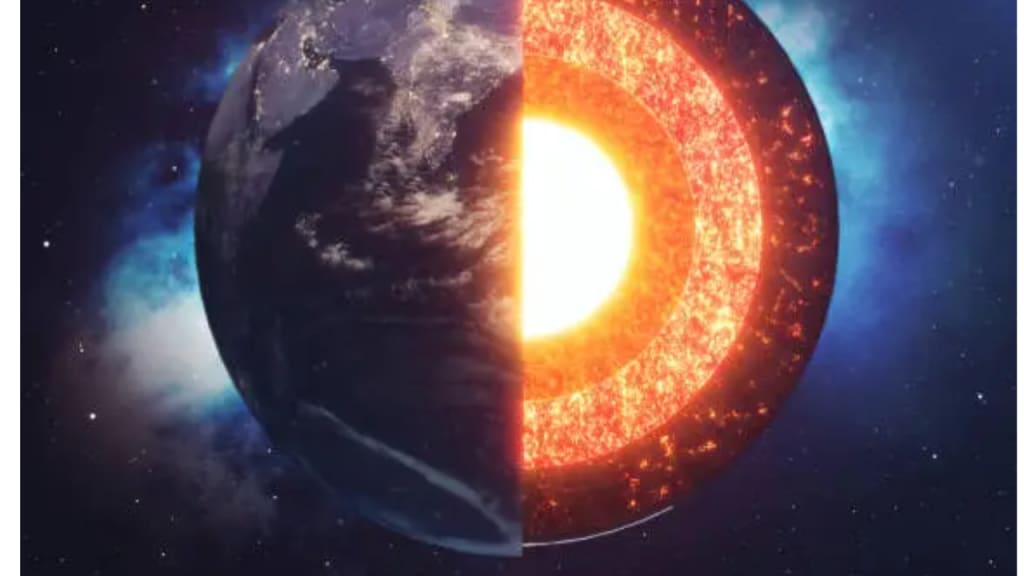Unraveling Earth's Mysteries: The Journey to the Planet's Core
"Exploring the Enigmatic Depths of Our Planet"

In school, we've all gazed at that chart depicting the layers of the Earth, a concept that has been ingrained in our minds since elementary school. However, have you ever wondered if our understanding of the Earth's composition is as clear as we think? Why are we so eager to explore outer space when we have yet to fully grasp the intricacies of our own planet?
Let's take a moment to explore what we truly know about the Earth's interior. Contrary to what science fiction movies like "The Core" might suggest, we haven't ventured as deep into the Earth's core as you might think. The deepest we've ever delved is in Russia, on the Kola Peninsula, where engineers created a remarkable man-made marvel - the Kola Borehole, which reaches a staggering depth of 7.5 miles. To put this in perspective, it's deeper than the deepest point in the ocean, which is approximately 6.8 miles deep.
The Quest for the Earth's Secrets
Why did we feel the need to dig a super-deep hole toward the center of the Earth? The answer lies in a historical rivalry between two superpowers - the United States and the Soviet Union. While the space race was well-known, there was another competition unfolding in the late 1950s and 1960s - a race to explore the Earth's depths. Both nations launched separate efforts to drill into the Earth's crust, each aiming to create the world's deepest hole.
The American drilling project, known as Project Moho, commenced in the spring of 1961 with the goal of reaching the Mohorovičić discontinuity (the Moho), which marks the boundary between the Earth's crust and mantle. Unfortunately, the project faced funding issues and was abandoned just five years later. The Soviets, on the other hand, took up the challenge in 1970 and, with the support of the Interdepartmental Scientific Council for the Study of the Earth's Interior and Super Deep Drilling, achieved remarkable success. They went on to create the Kola Super-Deep Borehole, setting a world record for depth.
Discoveries at Mind-Boggling Depths
Drilling 7.5 miles beneath the Earth's surface led to groundbreaking discoveries. One of the most significant findings was the revelation that the transition from granite to basalt, originally believed to occur between 3 and 6 kilometers below the surface, actually extended beyond 12 kilometers. This discovery challenged scientists' initial theories about seismic reflection results.
At around 4.3 miles deep, cracks in the rocks were discovered to contain water - an unexpected revelation. This suggested that hydrogen and oxygen atoms, squeezed out and retained below the surface due to impermeable rock, were responsible for the existence of water at such great depths.
The Kola Super-Deep Borehole project also yielded an astonishing discovery - microscopic fossils dating back more than 2 billion years. Researchers found the remains of 25 different species of plankton in these ancient rocks, preserved despite the extreme pressure and temperature. It was as if they had stumbled upon a prehistoric underwater world.
The Challenges of Extreme Depths
Despite these remarkable findings, the Kola Super-Deep Borehole project was halted in 1994 for several reasons. The temperature at the bottom of the hole reached a scorching 356 degrees Fahrenheit, far exceeding the expected 212 degrees. The rock density also increased, resembling plastic rather than solid rock, making further drilling exceedingly challenging.
There were other hypotheses for halting the drilling, too. Some believed the hole was linked to the tale of Noah's Flood, suggesting that all the water from the flood had drained into subterranean sinkholes. This discovery added fuel to the debate over the historicity of the flood narrative.
Additionally, persistent rumors emerged, claiming that scientists were apprehensive about drilling through to "Hell" and had heard screams from tortured souls. While this notion might sound far-fetched, it added an element of eerie mystery to the project.
A Sealed Enigma
Today, the Kola Super-Deep Borehole remains sealed and inaccessible. The area surrounding it has been closed off to the public. Remarkably, despite its immense depth, the borehole only delves into approximately 0.002% of the Earth's radius, leaving the majority of our planet's mysteries unexplored.
So, while the idea of venturing into space to colonize other planets is exciting, descending to the Earth's core presents a wholly different set of challenges. Would you be a pioneer and journey to the center of the Earth if you had the chance? The truth is, we don't yet know what secrets lie beneath our feet. Share your thoughts in the comments below, and let's continue the exploration of our incredible planet.
About the Creator
Enjoyed the story? Support the Creator.
Subscribe for free to receive all their stories in your feed. You could also pledge your support or give them a one-off tip, letting them know you appreciate their work.





Comments
There are no comments for this story
Be the first to respond and start the conversation.